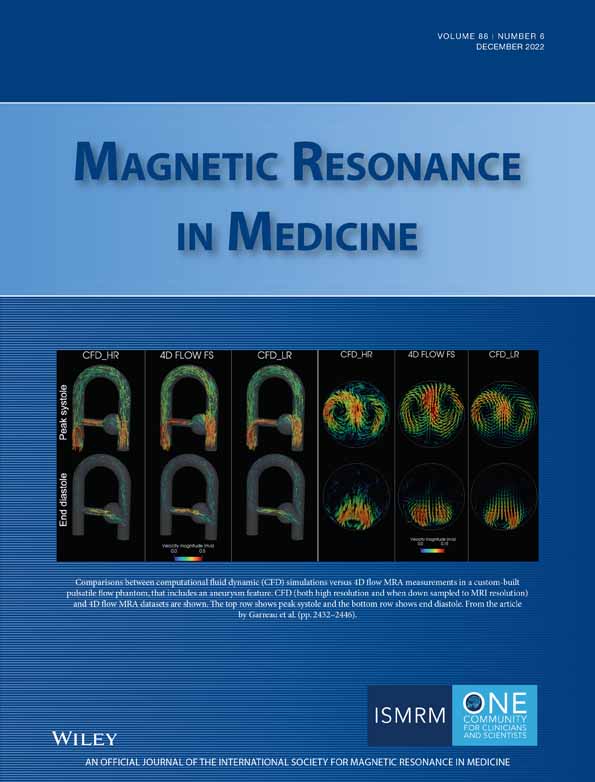Repeatability of B1+ inhomogeneity correction of volumetric (3D) glutamate CEST via High-permittivity dielectric padding at 7T
Funding information: National Institute of Aging of the National Institutes of Health, Grant/Award Numbers: R01AG063869; R01MH120174; R56AG066656; National Institute of Biomedical Imaging and Bioengineering, Grant/Award Number: P41EB029460
Click here for author-reader discussions
Abstract
Purpose
Ultra-high field MR imaging lacks B1+ inhomogeneity due to shorter RF wavelengths used at higher field strengths compared to human anatomy. CEST techniques tend to be highly susceptible to B1+ inhomogeneities due to a high and uniform B1+ field being necessary to create the endogenous contrast. High-permittivity dielectric pads have seen increasing usage in MR imaging due to their ability to tailor the spatial distribution of the B1+ field produced. The purpose of this work is to demonstrate that dielectric materials can be used to improve glutamate weighted CEST (gluCEST) at 7T.
Theory and Methods
GluCEST images were acquired on a 7T system on six healthy volunteers. Aqueous calcium titanate pads, with a permittivity of approximately 110, were placed on either side in the subject′s head near the temporal lobes. A post-processing correction algorithm was implemented in combination with dielectric padding to compare contrast improvement. Tissue segmentation was performed to assess the effect of dielectric pads on gray and white matter separately.
Results
GluCEST images demonstrated contrast enhancement in the lateral temporal lobe regions with dielectric pad placement. Tissue segmentation analysis showed an increase in correction effectiveness within the gray matter tissue compared to white matter tissue. Statistical testing suggested a significant difference in gluCEST contrast when pads were used and showed a difference in the gray matter tissue segment.
Conclusion
The use of dielectric pads improved the B1+ field homogeneity and enhanced gluCEST contrast for all subjects when compared to data that did not incorporate padding.




